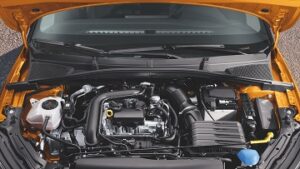
The Drifting Phenomenon: All About RC Drift Cars
RC cars are a thrilling and dynamic segment of the remote control (RC) car and truck hobby, gaining popularity for their unique style and challenging driving techniques. Drifting in full-scale and RC car racing involves intentionally oversteering when approaching a curve, letting the tires lose grip on the track, and allowing the vehicle to slide sideways. This article will delve into the world of RC drift cars, exploring their features, design modifications, and the engines that power these exciting machines.
Features of RC Cars Made for Drifting
These RC cars have specific features tailored to enhance their drifting capabilities. These machines are meticulously engineered for controlled oversteering and sliding, setting them apart from conventional RC cars. One of the defining characteristics of these cars is their specialized tires. These tires are meticulously designed to provide a controlled level of slip, allowing for precise control during drifting maneuvers.
In addition to specialized tires, RC drift cars feature an adjustable suspension system. This system allows drivers to fine-tune their vehicles for optimal performance on the track. By tweaking shocks, springs, and suspension geometry, drivers can achieve the perfect balance between stability and drift capability.
Another critical element is the differential setup. Many of these vehicles have locked rear differentials, ensuring power is evenly distributed to both rear wheels. This setup is crucial for maintaining control and executing controlled slides during drifts.
Moreover, they often boast a low center of gravity. This design feature is essential for stability when navigating through drifting maneuvers. A lower center of gravity lowers the risk of tipping over during aggressive slides, letting people push the limits of their vehicles safely.
To initiate and sustain impressive drifts, they are equipped with powerful motors. Brushless motors are a common choice due to their exceptional torque and responsiveness. These motors provide the propulsion to break traction and slide gracefully through corners.
Lastly, precise steering is vital for controlling drift angles. High-quality servos and adjustable steering linkages are integrated into these cars to ensure drivers can make rapid and accurate adjustments during their drifts.
Design Modifications for Drifting
In the world of RC cars, design modifications play a pivotal role in enhancing both performance and aesthetics. Achieving the ideal weight distribution is a critical aspect of these modifications. Some drivers opt to add extra weight to specific areas of the car, fine-tuning its balance to perfection. This subtle adjustment can significantly impact a car’s drifting capabilities.
Aesthetically, they often feature custom body kits that closely mimic the appearance of real-world drift cars. These kits are meticulously crafted, incorporating aerodynamic components such as spoilers and side skirts. Beyond aerodynamics, these body kits add to the overall visual appeal of the RC drift car, contributing to the authentic look that enthusiasts strive for.
Scale detailing is another noteworthy aspect of design modifications. Enthusiasts take great pride in customizing their drift cars with intricate decals, unique paint jobs, and various accessories. These detailing efforts are not only for visual appeal but also for creating a scale replica of real drift cars, adding an extra layer of authenticity to the experience.
Furthermore, RC drift car enthusiasts often invest in upgrading electronic components. Components like the ESC (Electronic Speed Controller) and the receiver can be upgraded to improve overall performance and responsiveness. These electronic upgrades can significantly enhance a car’s ability to execute precise drifting maneuvers.
The world of RC also offers a vast array of aftermarket parts and upgrades. These include alloy components that enhance durability, upgraded shock absorbers for improved handling, and specialized chassis modifications designed specifically for drifting. Enthusiasts can explore these options to fine-tune their cars to meet their exacting standards.
Engines Powering RC Drift Cars
The engine is the heart of any RC car, and selecting the right power source is a pivotal decision. Electric motors, particularly brushless varieties, are favored for their outstanding torque and rapid responsiveness. These motors are efficient and require minimal maintenance, making them a popular choice among enthusiasts.
In contrast, nitro engines, although less common in the drifting scene, offer a unique and realistic engine sound. This auditory element adds an extra layer of excitement to the RC drift car experience. Nitro engines require a specific fuel blend, typically including methanol, nitromethane, and lubricants. Properly mixing the fuel and tuning the engine are crucial steps to ensure optimal performance when using nitro power.
Electric ones are powered by rechargeable battery packs, primarily utilizing LiPo (Lithium-Polymer) batteries. These batteries balance power and runtime, making them well-suited for drifting demands. However, it’s imperative to monitor and maintain these batteries properly to maximize their lifespan and performance.
Conclusion
In conclusion, these cars offer a captivating and distinctive experience within RC racing. With their specialized features, meticulous design modifications, and powerful engines, they have captured the hearts of enthusiasts seeking a blend of style and skill. Whether one is drawn to the art of controlled drifting or the intricate detailing of scale models, drift cars provide endless opportunities for customization, improvement, and enjoyment in the thrilling world of controlled drifting.

